WOLVERINE CONSERVATION
Monitoring wolverines in the face of climate change
CARNIVORES OF THE WILD NORTH
Wolverines (Gulo gulo) are carnivores of the circumpolar wild north, inhabiting the boreal zones of North America and Eurasia. In the contiguous U.S., an estimated 300 wolverines currently live in select mountainous areas of Washington, Oregon, Idaho, Montana, and Wyoming. These wide-roaming mammals require enormous landscapes, minimal human disturbance, and a persistent snowpack into the spring.
Wolverines were extinct in Washington by the early 1900s due to over-trapping and widespread predator control. In recent decades, wolverines have slowly begun to recolonize the Cascade Range from populations in Canada. Woodland Park Zoo has been at the forefront of regional wolverine conservation for more than a decade. In 2019, we initiated the Washington Wolverine Research and Monitoring Group (WWRMG) to strengthen collaborations among wolverine projects statewide.
Header Photo: David Moskowitz/Cascades Wolverine Project
ABOUT THE PROJECT
In addition to sharing data and ideas to advance wolverine recovery in Washington, WWRMG maintains the Database of Verifiable Wolverine Detections in Washington. This comprehensive database documents hundreds of non-telemetry-based, verifiable detections of wolverines in Washington from 1996 to the present. Verifiable detections are those associated with physical evidence (e.g., diagnostic photo, DNA, carcass). The database was created by the Pacific Northwest Research Station of the U.S. Forest Service to provide a comprehensive record of reliable wolverine detections that can be used for research and conservation purposes. In 2024, Woodland Park Zoo took over management of the database on behalf of WWRMG.
Please see “Report Wolverine Observations” below to report sightings of wolverines in the Cascades.
Good News for Wolverines
WWRMG members spearhead valuable research and community science to inform wolverine conservation. Beyond our respective projects as member organizations, we contribute to broader collaborations like the transboundary Cascades Carnivore Monitoring Program and multi-state efforts to monitor wolverine status in the western U.S.
Wolverines cover huge areas in search of food, mates, and denning habitat, making them a difficult species to study. WWRMG members use a variety of cutting-edge survey tools to maximize the effectiveness and efficiency of our field research.
How We Monitor Wolverines
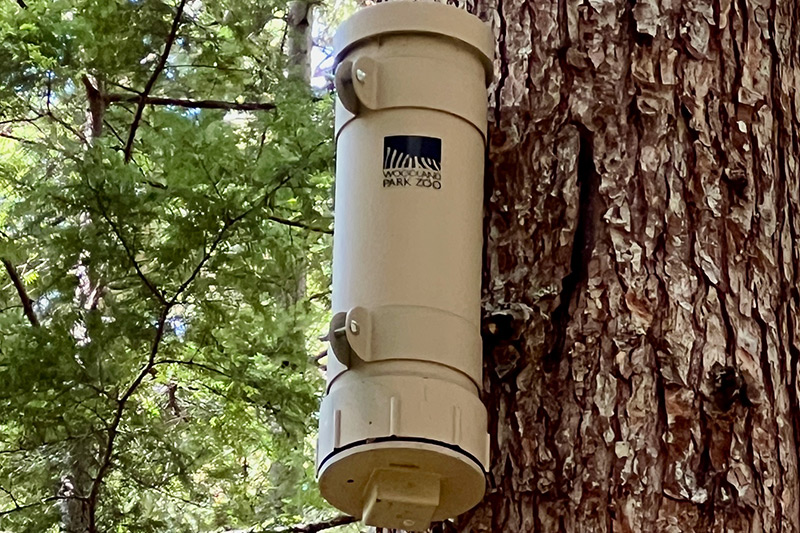
Camera Traps and Scent Dispensers
Motion-triggered cameras, paired with automated scent dispensers to attract wildlife (co-invented and produced by Woodland Park Zoo), enable us to reliably detect wolverines in remote mountainous terrain.
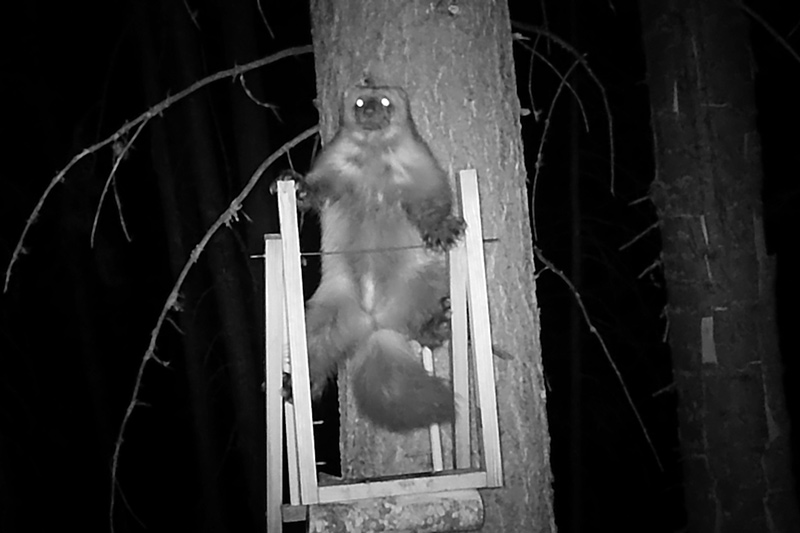
Run Poles and DNA
A run pole is secured to a tree, enticing wolverines to walk out on a horizontal beam and expose their unique chest pattern and abdomen to a remote camera—potentially enabling us to identify individuals and reproductive status. Hair-snagging devices capture DNA for genetic analyses, which can provide even more information about the population.
Photo: Cascades Wolverine Project
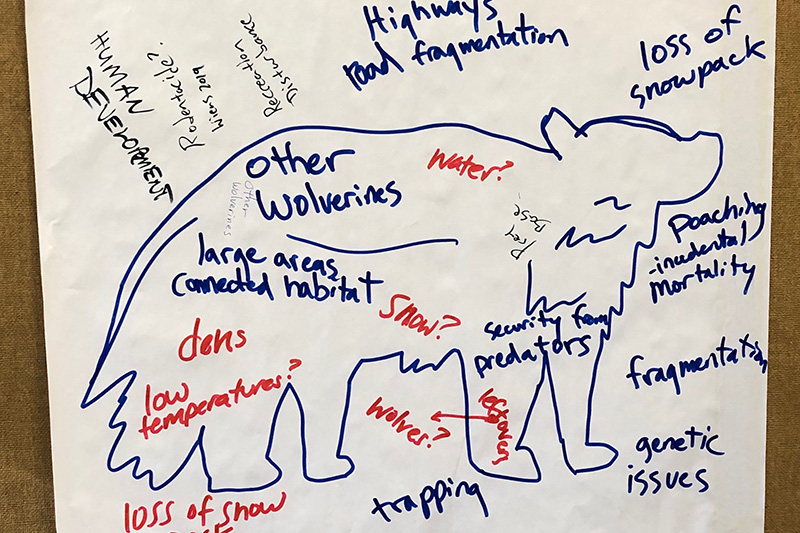
People Working Together
Long-term wolverine monitoring demands creativity and collaboration. Washington’s wolverine research community includes nonprofits, agencies, tribes, academics—and recreationists who help document wolverines during their outdoor adventures.
Washington Wolverine Research and Monitoring Group (WWRMG) comprises a diversity of organizations with a commitment to wolverine conservation, including:
Cascades Carnivore Project
Cascades Wolverine Project
Conservation Northwest
North Cascades National Park
Okanogan-Wenatchee National Forest
USFS Pacific Northwest Research Station
Washington Department of Fish and Wildlife
Report Wolverine Observations
Have you seen a wolverine on a camera trap or during an outdoor adventure? Lucky you!
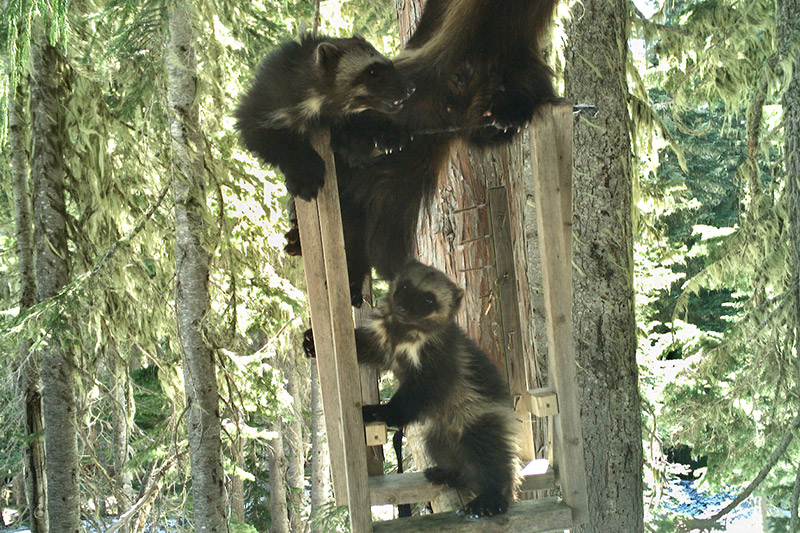
Photo: Cascades Carnivore Project
Please report your observation via one of the options described below so that you can help us track wolverine recovery in the Cascades. All verifiable detections will become part of the Database of Verifiable Wolverine Detections in Washington.
- Researchers interested in contributing to or requesting data from the verifiable detections database, please contact Dr. Robert Long at Robert.long@zoo.org.
- Recreationists and other members of the public, submit your wolverine observation through the Cascades Wolverine Project’s submission portal.
- Support or volunteer with one of the WWRMG partner groups listed above. We’re working together to make sure wolverines have a solid future in the Washington Cascades!
About Wolverines
Wolverines are the largest terrestrial member of the weasel (mustelid) family, which also includes martens, mink, and otters. Typically weighing 20–40 pounds, wolverines have thick coats and huge feet with semi-retractable claws, enabling them to travel many miles each day in steep, snowy terrain. Given their compact build, broad head, and dark fur, wolverines are sometimes mistaken for black bears. Unlike black bears, however, wolverines are mostly meat-eaters.
During winter, wolverines scavenge carcasses in the snow and feed on the remains of animals killed by larger predators. They also rely on prey they catch themselves, such as squirrels, hares, and occasionally hoofed mammals, like caribou and deer. Wolverines use snow as a “refrigerator” to cache meat and keep it fresh.
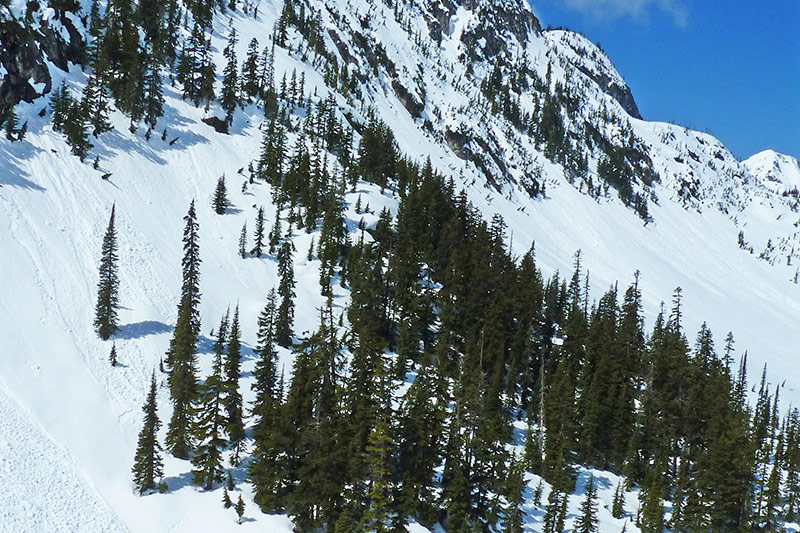
Site of wolverine den, North Cascades. Photo: WDFW/Scott Fitkin
Male wolverines usually mate with several females in summer and are thought to develop lifelong bonds with their mates. Females give birth to 1–4 kits in late February or March, in deep snow dens that shelter their young from other predators and the cold. This is why persistent spring snow is so important for wolverines.
Because wolverines are vulnerable to habitat loss due to climate change (i.e., reduced snowpack), they are listed at “Threatened” under the U.S. Endangered Species Act. Other threats to Washington’s wolverine population include low genetic diversity, roads, and disturbance from winter recreation. We need to carefully monitor and protect this small population to ensure that wolverines continue to recover.
WHAT YOU CAN DO
Make Changes
Threats from climate change affect all living things, and wolverines are particularly vulnerable to predicted reductions in snowpack and earlier spring snowmelt. Commit to lifestyle changes that lower your carbon footprint at home, and support companies and brands that share those values.
Advocacy
Habitat destruction and fragmentation can be mitigated with smart forest management. Advocate for intact habitats and forests by being a voice for wildlife. Vote with animals in mind and support local forest stewardship with community buy-in.
Stay Informed
Join conservation organizations in bringing climate change solutions to all. Volunteer at your local zoo, follow an eco-blog, or start a conversation with friends about ways you can take action on behalf of a healthier planet.
Dig Deeper
Select Publications by WWRMG Members
D.E. Moskowitz, A.C. Machowicz, M.A. Scrafford, P. Naveau, J.N. Rose, and S. Williams. 2025. Evaluating the accuracy of wolverine identification from photographs of snow tracks by expert observers in North America. Wildlife Biology, June 10. https://doi.org/10.1002/wlb3.01466
R.A. Long, P. MacKay, J.D. Sauder, M. Sinclair, K.B. Aubry, and C.M. Raley. 2024. An overwinter protocol for detecting wolverines and other carnivores at camera traps paired with automated scent dispensers. Ecology and Evolution, May 2. https://doi.org/10.1002/ece3.11290
Day, C.C., Landguth, E.L., Sawaya, M.A. et al. Genetic connectivity of wolverines in western North America. 2024. Scientific Reports: 14, 28248. https://doi.org/10.1038/s41598-024-77956-9
Climatic conditions limit wolverine distribution in the Cascade Range of southwestern North America. 2023. K.B. Aubry, C.M. Raley, A.J. Shirk, K.S. McKelvey, and J.P. Copeland. Canadian Journal of Zoology: 101. http://dx.doi.org/10.1139/cjz-2022-0005
J.T. Fisher, S. Murray, M. Barrueto et al. 2022. Wolverines (Gulo gulo) in a changing landscape and warming climate: A decadal synthesis of global conservation ecology research. Global Ecology and Conservation: 34. https://doi.org/10.1016/j.gecco.2022.e02019
Other Resources
The Wolverine Foundation
U.S. Fish & Wildlife Service
Washington Department of Fish & Wildlife
Wolverine Watch
MORE WAYS TO HELP